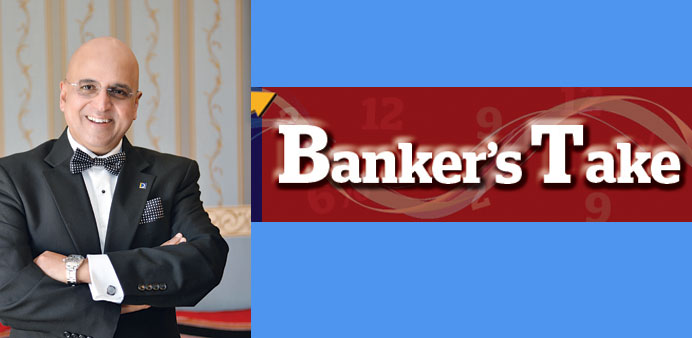India’s finance minister yesterday, for the first time in history, presented the Finance and Railway budgets together. India has benefited from lower oil prices, resulting in the improvement in current account deficit 0.3% of GDP and deceleration in CPI to 3.4% in December 2016 from more than 6% during 2016.
CPI is expected to remain within RBI’s mandated range of 2% to 6%. Foreign Direct Investment (FDI) increased from Rs1,07,000 crores in the first half of last year to Rs1,45,000 crores in the first half of 2016-17. This marks an increase by 36%, despite a 5% reduction in global FDI inflows.
India’s GDP decelerated to 7.1% during the last quarter of 2016. The slowdown was on account of de-monetisation. The de-monetisation is expected to be transient in nature as the government has already re-monetised the system with Rs2,000 and Rs500 notes and withdrawn the limits on cash withdrawals.
The fiscal deficit is targeted to be at 3.2% and 3.0% in 2017-18 and 2018-19 respectively. The total expenditure in the budget has been placed at Rs21.47 lakh crores — this includes a 25% incremental allocation for capital expenditure y-o-y.
The defence expenditure excluding pensions is at Rs274,114 crores. The committee has approved a debt-to-GDP ratio at 60% for general government by 2023, including 40% for central government and 20% for state government.
The net market borrowing is limited at Rs3.48 lakh crores. The investment in the budget was allocated to farm, rural, defence, infrastructure, energising the youth and improving governance towards tax administration.
The budget has been allocated to incentivise and subsidise the farm and rural parts of India. This was on account of weak monsoon in the past. The objective is to double the farmer income in five years. The monsoon has been decent in 2016, which has resulted in 4.1% growth in the agriculture sector.
The budget has allocated Rs10 lakh crores of agricultural credit. There has been an incremental outlay in terms of crop insurance to 50% from 30% before two years ago; this is to cushion the farmers from any natural calamity resulting in financial losses.
The total allocation for the rural, agriculture and allied sectors in 2017-18 is Rs1,87,223 crores, which is 24% higher than the previous year.
Different schemes like Prime Minister’s Employment Generation Programme (PMEGP) and credit support, Swachh Bharat Mission, National Rural Drinking Water Programme and Pradhan Mantri Gram Sadak Yojana and MGNREGA have been allocated for in the budget.
The budget is also focused on providing 1 crore affordable homes to the poor. The National Housing Bank will refinance individual housing loans of about Rs20,000 crores in 2017-18.
In addition, interest subvention for housing loans has also been announced by the prime minister. A surplus liquidity in the banking system on account of de-monetisation has brought the interest rates lower, which helps in executing the affordable homes project.
The government has allocated Rs64,900 crores for the roads sector — this is 11.9% higher as compared to the last year. The higher budget will facilitate better connectivity with ports and remote villages.
The airports under Tier-2 cities will be taken up for operation and maintenance in the PPP mode. The budget outlay has been set at Rs241,387 crores in 2017-18.
An allocation of Rs10,000 crores has been set for high speed broadband connectivity on optical fibre for more than 150,000 villages.
In solar energy, the government has proposed to take up the second phase of solar park development for additional 20,000MW capacity.
For the salaried income middle-class, the tax rate has been brought down to 5% between Rs2.5 lakhs to Rs5 lakhs and introduced a surcharge of 10% on income of Rs5mn to Rs10mn. For the smaller businesses with an annual turnover of upto Rs50 crores, the tax rate has been cut by 5% to 25%.
The budget has allocated Rs10,000 crores to recapitalise the PSU banking sector. In order to give further boost to the banking sector, the budget has proposed to increase allowable provision for Non-Performing Asset from 7.5% to 8.5%. This will reduce the tax liability of banks. It is also proposed to tax interest receivable on actual receipt instead of accrual basis in respect of NPA accounts of all non-scheduled cooperative banks also at par with scheduled banks. This will remove hardship of having to pay tax even when interest income is not realised. The Minimum Alternate Tax is presently levied as an advance tax. In order to allow companies to use MAT credit in future, the budget has proposed to carry forward MAT upto a period of 15 years instead of 10 years at present.
The budget didn’t touch the excise duty, long term capital gains and short term capital gains tax. The budget has taken innovative steps to promote digitisation, like cash transaction of Rs3 lakhs and above not to be allowed, Aadhaar-Card-based payment system etc.
India aims to accelerate its growth and the budget has given emphasis to this by increasing investment in infrastructure, bringing fiscal discipline and keeping inflation under control.
The budget has laid out strong emphasis to revive the growth in rural economy, which in turn will be reflected in the overall GDP.
The budget has taken measures for reviving the capital expenditure in order to kickstart the investment cycle, On the whole, the steps taken by the budget will revive the GDP growth of Indian economy.
*Dr R Seetharaman is Group CEO of Doha Bank.

Dr R Seetharaman is Group CEO of Doha Bank. The views expressed are his own.

